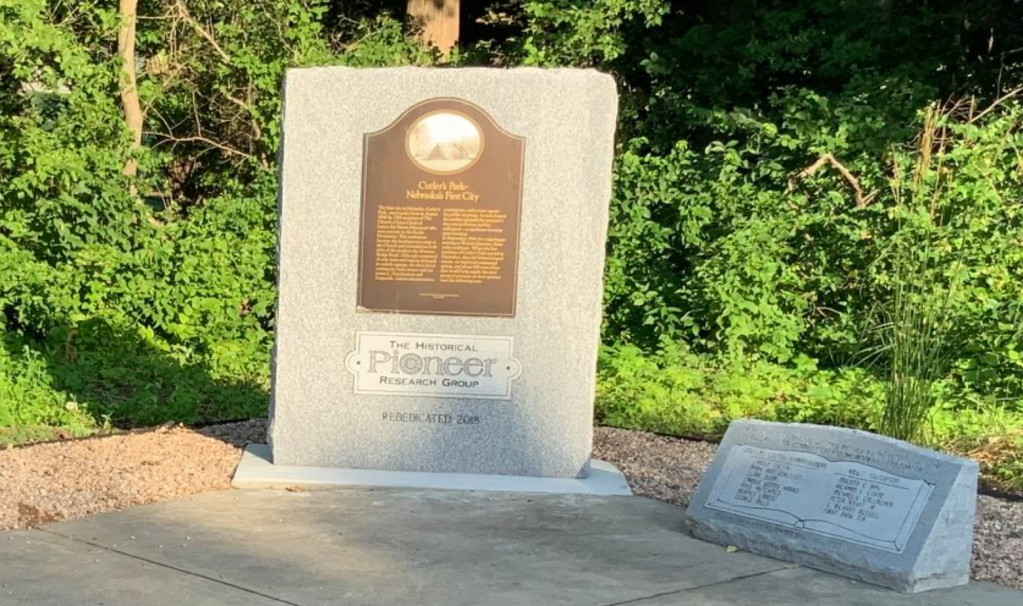Many homes are built and lived in without major events. Sure, first-time homeowners, births, disease and deaths, and all the regular family things happen in many of these places, but events of consequence are exceptional in any community. Given the size of the community, its inevitable that North Omaha has had many of those exceptional events. This is a history of an average house with an exceptional story at 5833 Florence Boulevard.
Building a Basic Home
Located along the Most Beautiful Mile in Omaha, from the outside the bungalow at 5833 Florence Boulevard looks like nothing remarkable, and on paper there’s little indication of its past, either. However, on a dark night in 1920 it was the site of a heinous crime.
Sitting on the east side of the boulevard, this address has always been an unassuming house, to say the least. Built in 1914, it has five rooms and a single bathroom, and today it sits on almost a half acre. There’s an unfinished basement, and a lovely covered porch across the front of the home. Its easy to imagine sitting there on a humid summer night looking out at the lightning bugs and listening to the cicadas.
It might have been that kind of night in September 1920 when a gun battle broke out at the house.
Running a Hootch House
George Shelton Cackley (1866-1936) was a retired liquor wholesaler who ran a moonshining operation in his basement. He started by running a tavern on North 16th Street in the 1880s, and in the early 1900s he and his brother started a large-scale operation. However, in an era when there were activists determined to keep Nebraska dry, Cackley’s profession was under the knife. The year his wife died, he took action from his new house on Florence Boulevard and gained a reputation that apparently caught up to him.
Nebraska was a dry state. In 1896, the Slocomb Act allowed cities across the state to enact their own laws banning alcohol sales. That wasn’t enough for the teetotalers though. The same year the house at 5833 Florence Boulevard was built, Nebraska signed its first law to become dry statewide. Nebraska became dry four years before the 18th Amendment was ratified; later, the state’s law wasn’t repealed until 1934, a year after the 18th Amendment was repealed. Nebraska loved to think of itself as liquor-free! However, Omaha was not so much the same.
The home of three large breweries at the time (Storz, Metz and Krug), Omaha was home to the largest concentration of German immigrants in the state as well as the largest number of bars per capita in the state and had a high percentage per capita nationally, too (and is #9 nationally today).
So it shouldn’t come as a surprise that there was a massive bootlegging industry in the city. Along with all those beer-guzzling and moonshine swigging drinkers, there was also a robust criminal enterprise and many “former” bars and taverns that needed to move product. Omaha had its share of speakeasies, too.
So old man Cackley made hootch in the basement of his little bungalow on Florence Boulevard. He also had a tunnel shooting out of the rear of his basement into the forest below the cliff, which is sealed up now.
On Friday, September 17, 1920, Cackley was sleeping in his first-floor bedroom when he heard jostling in his basement distillery. Pulling out his revolver, the old man started capping his gun out the window. From the low light of his houselights, he saw three robbers running with bottles under their arms. The men shot back as they ran into the darkness of the late night, dropping a 5-galloon bottle of hootch on the front lawn along the way.
Surveying the damage afterwards, Cackley found the robbers cut all the wires leading to the house, including electricity and the telephone. There are no further reports of any activity at this home. Cackley himself moved from the house to North 25th and Fort in the mid-20s, and died in 1936 at the age of 69.
After Cackley
After George Cackley died, his second wife Catherine Rahn Cackley (1872-1958) owned the house for several years. She sold the house in 1934, and the family of Fred Wilrodt moved in. After the Wilrodt family left, Walter and Jessie Hiebenthal raised a family there until 1971.
Today, the house sits still along the boulevard without revealing any of its secrets. Few people know it was the site of a gunfight during Prohibition, but now this history is out there.
What do YOU know about houses on Florence Boulevard? Share your memories, ideas and thoughts in the comments section!
You Might Like…
- A History of Florence Boulevard
- A History of 6327 Florence Boulevard
- A History of 5815 Florence Boulevard
- Architecture Styles in North Omaha

3155 Meredith Ave. | 5815 Florence Blvd. | 6711 N. 31st Ave. | 3210 N. 21st St. | 4517 Browne St. | 5833 Florence Blvd. | 1922 Wirt St. | 3467 N. 42nd St. | 5504 Kansas Ave. | Lost Blue Windows House | 2003 Pinkney Street | Hoyer House | O.W. Herald House






Leave a comment